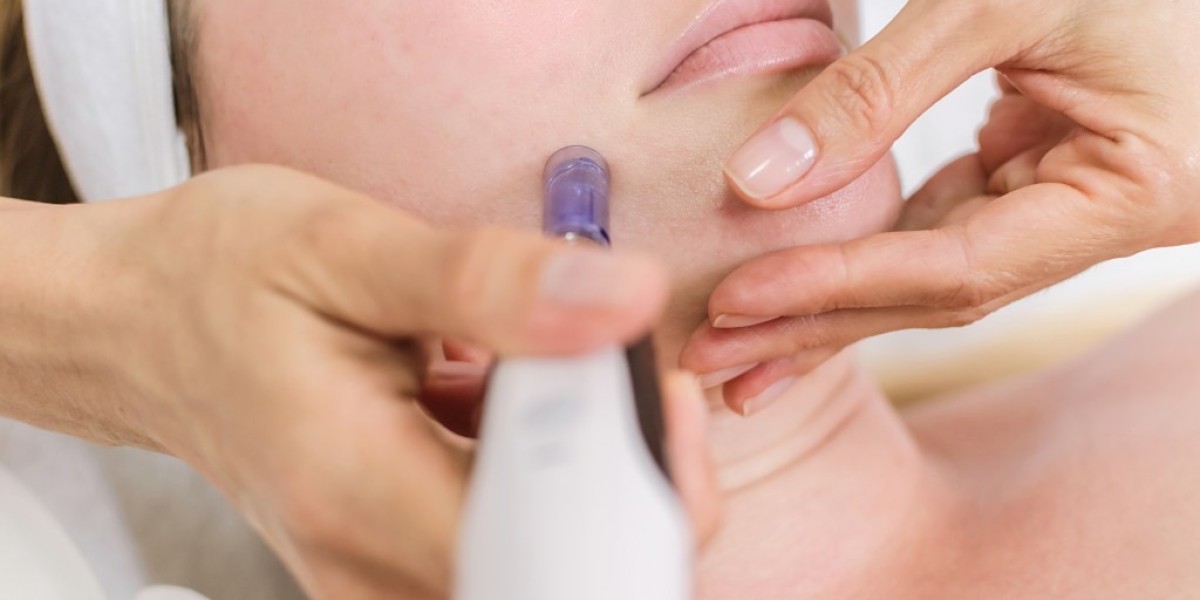Different laser technologies are used for scar removal based on the type of scar, skin tone, and treatment goals. Here’s a comparison of the most common laser scar removal technologies:
1. Ablative Lasers
- Types: CO2 Laser, ErbiumLaser
- How It Works: Ablative lasers remove the top layers of skin to stimulate new skin growth and collagen production. This makes them effective for deep scars, including surgical scars, severe acne scars, and hypertrophic scars.
- Effectiveness:
- Ideal for treating deeper scars or scars with uneven texture.
- Can significantly improve the appearance of raised scars by resurfacing the skin.
- Downtime: Longer recovery time (7–14 days), as skin needs to heal after layers are removed. Redness and swelling may last for weeks.
- Side Effects: Risk of infection, hyperpigmentation, or scarring if not properly cared for after the procedure.
- Best For: Fair skin types, severe or deep scars, individuals willing to tolerate more downtime.
2. Non-Ablative Lasers
- Types: Fractional Laser (Fraxel), Pulsed Dye Laser (PDL), NdLaser
- How It Works: Non-ablative lasers do not remove the outer skin layer but target the underlying layers to stimulate collagen production. They work by heating the skin to encourage repair without destroying surface skin tissue.
- Effectiveness:
- Suitable for treating discoloration, shallow scars, or early-stage scars.
- Helps improve skin tone and texture, but less effective for deep scars.
- Downtime: Minimal to no downtime. Mild redness or swelling can occur for a few days.
- Side Effects: Fewer side effects compared to ablative lasers, though some risk of pigment changes exists.
- Best For: Most skin types, including darker skin tones, those with mild to moderate scars, individuals seeking less invasive treatment with quick recovery.
3. Fractional Lasers
- Types: Fractional CO2, Fraxel Dual
- How It Works: Fractional lasers target tiny fractions of the skin, leaving surrounding tissue intact. This promotes faster healing while still stimulating collagen production and skin resurfacing.
- Effectiveness:
- Can treat both surface scars and deeper scars, depending on the settings.
- Improves skin texture and appearance without extensive damage to the skin.
- Downtime: Downtime varies by treatment depth—may range from a few days to a week for more aggressive treatments.
- Side Effects: Redness, swelling, and potential pigment changes, but less severe than full ablative treatments.
- Best For: A wide range of scar types (acne, surgical scars) and skin tones. Suitable for those who want noticeable results but with quicker recovery than ablative lasers.
4. Pulsed Dye Lasers (PDL)
- How It Works: Pulsed Dye Lasers target blood vessels in the skin, which makes them particularly effective for vascular scars (scars with redness or pink discoloration). The laser energy is absorbed by blood vessels, causing them to collapse and fade.
- Effectiveness:
- Best for treating red or vascular scars (e.g., fresh surgical scars, acne scars).
- Less effective for texture or deeper scar issues.
- Downtime: Minimal downtime, though redness may persist for a few days.
- Side Effects: Mild redness or bruising that resolves within days.
- Best For: Those with vascular scars, fresh scars, or red discoloration. Safe for most skin types, including sensitive skin.
5. Nd
Lasers
- How It Works: This type of non-ablative laser penetrates deeper into the skin than other lasers, and it can target blood vessels, making it useful for both vascular scars and deep tissue stimulation.
- Effectiveness:
- Useful for treating deeper scars and reducing redness in vascular scars.
- Improves collagen production without damaging the skin’s surface.
- Downtime: Minimal to no downtime, although some swelling or redness may occur.
- Side Effects: Lower risk of pigmentation changes compared to other lasers, making it safer for darker skin tones.
- Best For: Deeper scars, individuals with darker skin, those seeking minimal downtime.
6. Picosecond Lasers (e.g., PicoSure)
- How It Works: Picosecond lasers use ultra-short pulses of energy to target skin imperfections and stimulate collagen production. They are gentle on the skin but effective for reducing pigmentation and improving texture.
- Effectiveness:
- Can treat acne scars and pigment issues (e.g., dark spots or hyperpigmentation).
- Gentle treatment that works over multiple sessions.
- Downtime: Minimal downtime, with only mild redness or swelling for a short period.
- Side Effects: Less risk of scarring or hyperpigmentation, especially for darker skin tones.
- Best For: All skin types, especially those with sensitive or dark skin who need a gentle, effective treatment.
Comparison Summary:
| Laser Type | Best For | Downtime | Skin Types | Side Effects |
|---|---|---|---|---|
| Ablative (CO2, Erbium) | Deep scars, raised scars, severe scars | 7–14 days | Fair | Redness, swelling, risk of scarring or pigmentation changes |
| Non-Ablative (Fraxel, PDL) | Mild to moderate scars, discoloration | Minimal | All | Mild redness, swelling |
| Fractional (CO2, Fraxel) | Both surface and deep scars | 3–7 days | All | Mild swelling, some downtime |
| Pulsed Dye Laser (PDL) | Vascular scars, red discoloration | Minimal | All | Temporary redness, bruising |
| Nd | Deeper scars, vascular issues | Minimal | Darker skin types | Minimal side effects, good for darker skin |
| Picosecond (PicoSure) | Pigment issues, mild scars | Minimal | All | Very mild swelling or redness |
Conclusion:
The choice of laser technology depends on the type of scar (depth, color, texture), your skin type, and your tolerance for downtime and side effects. For deep or raised scars, ablative or fractional lasers are often recommended, while for milder scars or pigmentation issues, non-ablative or pulsed dye lasers may be ideal.







